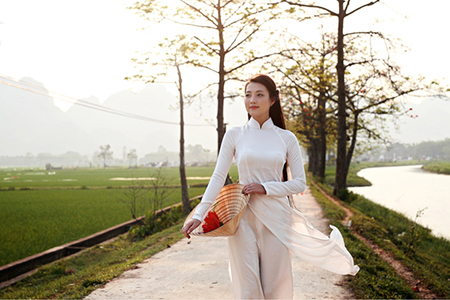This might be a good summary: "Beautiful, but not for every woman and every occasion." Or: "elegant," "graceful," "simple but showing off the woman's slender form," "a charming dress with its flaps fluttering attractively in the wind ...”
Visitors to Vietnam have used all sorts of adjectives to express their admiration for the traditional tunic worn by Vietnamese women. Because the .ao dai is close-fitting, it becomes slender women, as most young Vietnamese women are. It is like Raymond de Dalmas’ description of the kimono as "perfectly suitable for the Japanese women's particular beauty and making them appear even more lovely." Yet we don't often meet women wearing kimonos in Tokyo's streets, perhaps because the garment is not appropriate for work. For the same reasons, we rarely meet Hanoi an women wearing .ao dais in the streets.

Western women, who are generally less slender than the Vietnamese. love the .ao dai but rarely wear one because they feel uncomfortable. As Edie Schule notes in her memoir, Earth and Water, "Emmie Clare was immensely popular with her students, but when we met, she had just ended a three-month tussle with school administrators over their requirement that female teachers wear .ao dai to work. We all considered this a victory since the .ao dai has been transformed from a piece of 'traditional' attire into an uncomfortable, inconvenient form-fitting burden."



